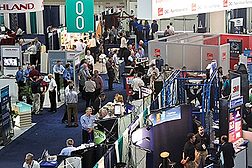Home » bonding
Articles Tagged with ''bonding''
Pressure-Sensitive Adhesives 101
This article explains what a pressure-sensitive adhesive is, how it is constructed and what adhesive options are available.
October 1, 2009
Adhering to Difficult Substrates with Silicone Adhesives
Substrates with reactive groups available for bonding make chemical bonding easier to achieve, while substrates with nothing to react to make adhesion difficult.
October 1, 2005
Packaging EndUser: Starch- and Dextrin-Based Adhesives
Starch- and dextrin-based adhesives play a large part in industrial production, especially the packaging industry.
August 1, 2005
Manufacturing Pressure-Sensitive Adhesive Products: A Coating and Laminating Process
How are pressure-sensitive adhesives made?
April 1, 2005
Epoxy, Acrylic, and Urethane Structural Adhesives
Increasing alternatives to mechanical fastening are available.
September 1, 2004
Keep the info flowing with our eNewsletters!
Get the latest industry updates tailored your way.
JOIN TODAY!Copyright ©2025. All Rights Reserved BNP Media.
Design, CMS, Hosting & Web Development :: ePublishing








